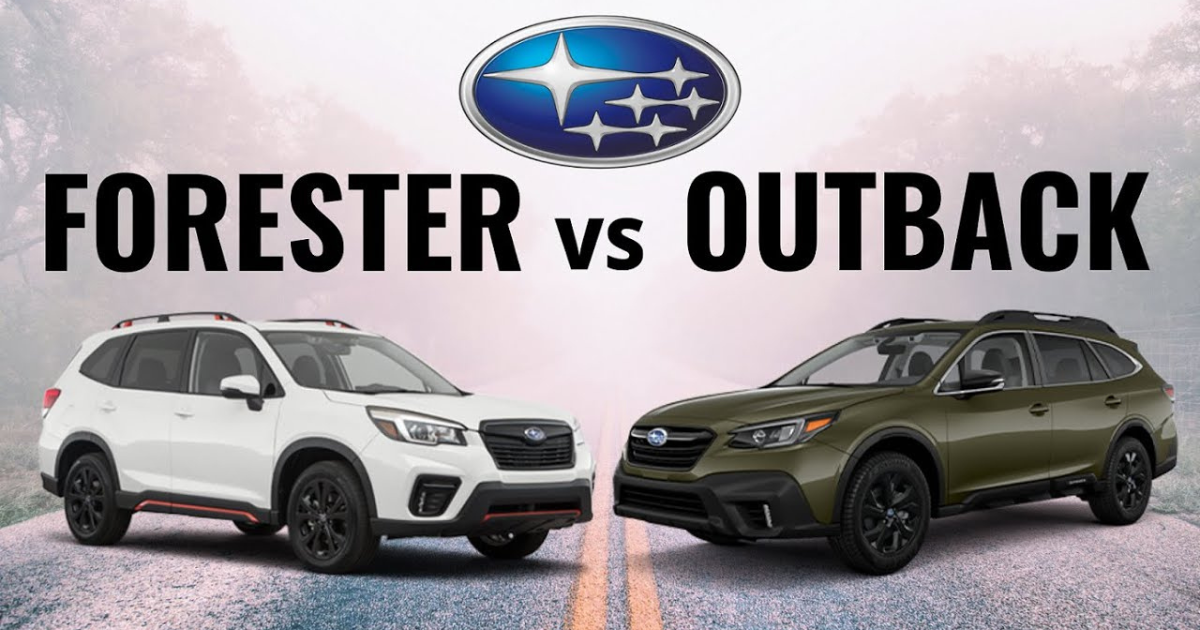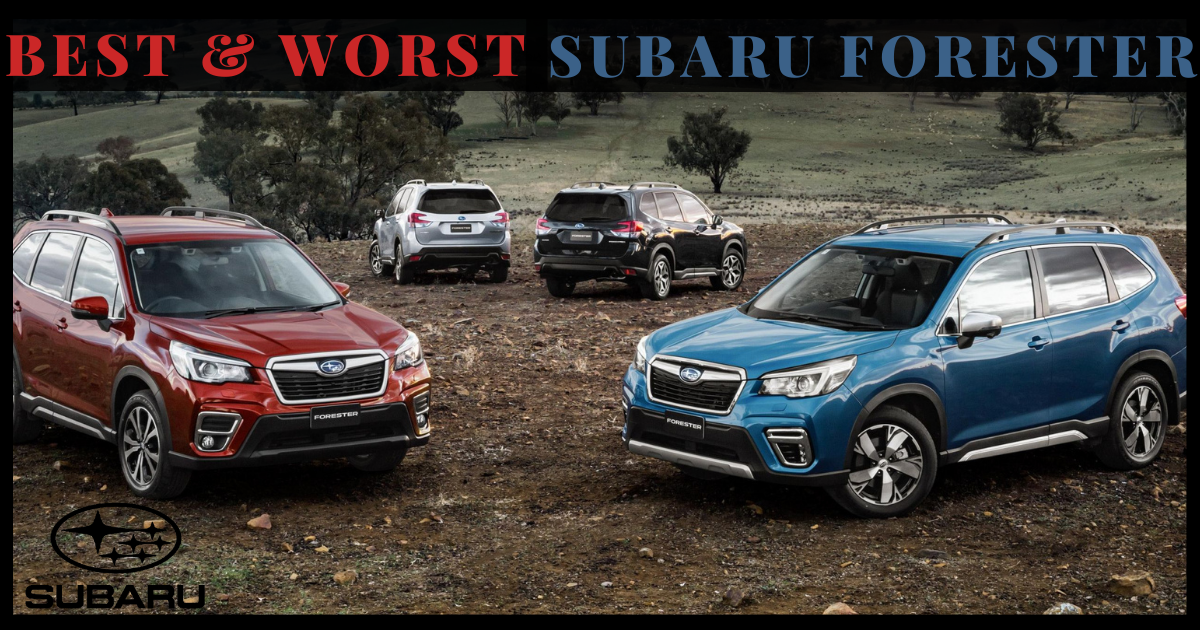
Slowly, the compact crossover has become one of the most popular car types in North America, taking the place of many small sedans and hatchbacks. The popularity is due to the fact that crossovers provide more utility than compact cars without any compromise in fuel economy or price. As a result, the market keeps expanding as more and more buyers prefer to purchase a compact crossover.
The segment’s success has led to many famous compact crossovers, making it difficult to figure out which one is the best. For instance, if you are comparing the Mazda CX-5 with the Subaru Forester, both are excellent cars with a tonne of standard and extra amenities. Let’s take a look at their specifications and compare their features to know which one is the best among the two.
Forester vs. CX-5 | Engine Power
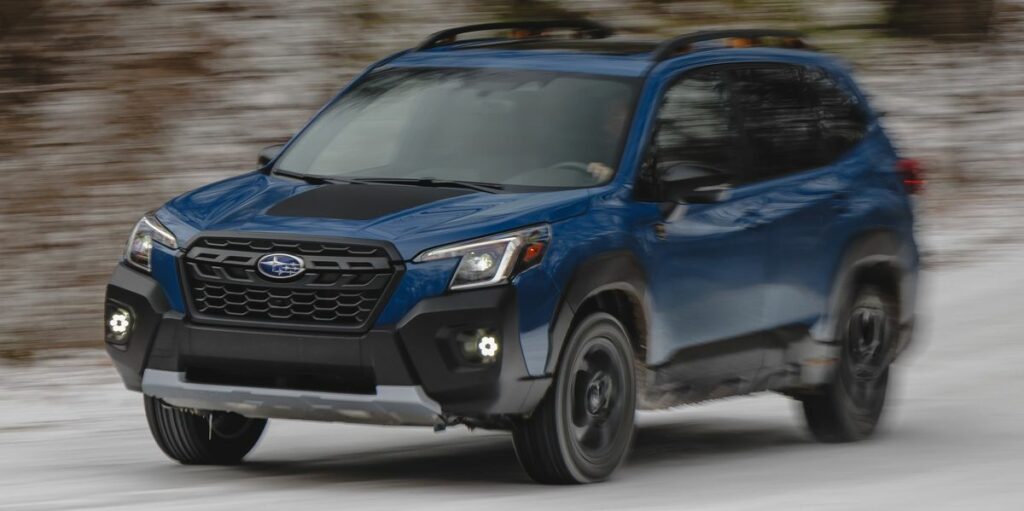
The Mazda CX-5 is powered by a naturally aspirated 2.5-liter Skyactiv-G four-cylinder engine with 187 horsepower and 186 lb-ft of torque. On the other hand, with 182 horsepower and 176 lb-ft of torque, the Subaru Forester has a naturally aspirated 2.5-litre four-cylinder of its own, but it provides less base horsepower and torque than the CX-5.
With more power, the Mazda is quicker and more efficient in all driving conditions. The Mazda can tow up to 907kg, whereas the Forester can only manage 680kg due to the Mazda’s superior powertrain. The Subaru Forester only comes with one engine, but the CX-5 also comes with the Skyactiv-G 2.5 T engine.
This four-cylinder engine’s Dynamic Pressure Turbo system may produce up to 250 horsepower and 320 lb-ft of torque when using premium fuel. If you prefer a more thrilling driving experience from your compact SUV, the CX-5 is the best choice because of its turbocharged engine, which significantly outperforms the Subaru.
Forester vs. CX-5 | Transmission and Drivetrain

Although the Mazda CX-5 and the Subaru Forester have manual shift modes controlled by paddle shifters positioned on the steering wheel, these two vehicles have very different transmissions. The CX-5 has a conventional six-speed automatic transmission that can be manually adjusted using the paddle shifters on the steering wheel or the shift handle on the center console.
While the Subaru features shift paddles, it also has a continuously variable transmission. Instead of conventional gears, the CVT uses a system of drums constantly changing in size to keep the engine operating within its ideal range.
Since some people dislike how a CVT operates, Subaru offers a manual mode that generates shifts and makes the gearbox feel more like a conventional automatic gearbox. However, the CX-5 has a major benefit for those who dislike the CVT’s function.
Forester vs. CX-5 | Size and Dimensions
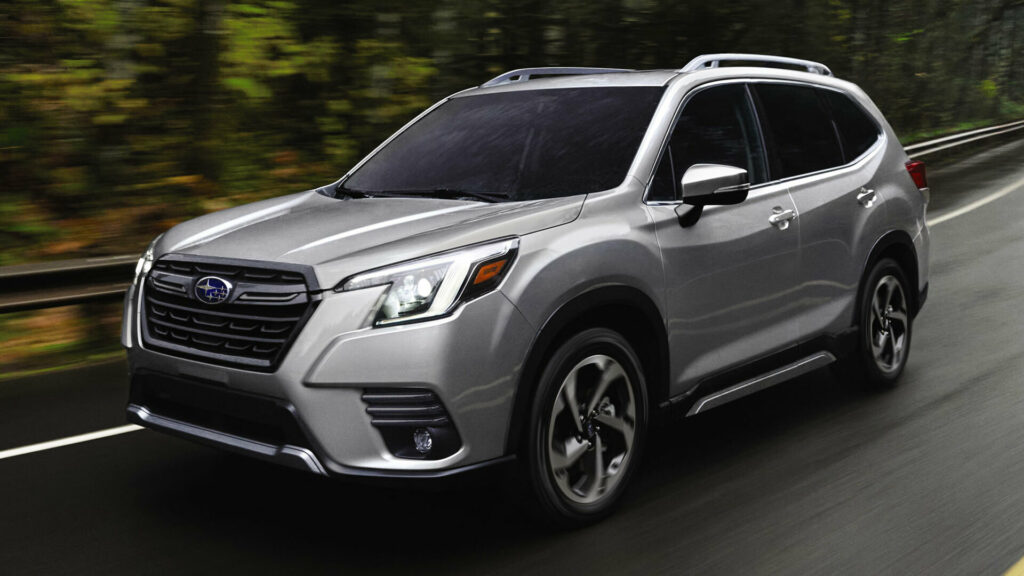
Both of these vehicles are about the same size, but the Forester is a bit taller and longer, while the CX-5 has a longer wheelbase and is bigger overall. The Mazda is easier to fit into garages due to its lower overall height, and parallel parking is made simpler by its shorter length. The longer wheelbase provides more room within and improves the ride quality due to the increased distance between the vehicle’s axles.
| Dimensions | 2024 Subaru Forester | 2024 Mazda CX-5 |
| Wheelbase | 105.1 in. | 106.2 in. |
| Length | 182.7 in. | 180.1 in. |
| Height | 67.5 in. | 66.1 in. |
| Curb weight | 3,454 lb. | 3,783 lb. |
| Ground Clearance | 8.7 in. | 7.6 in. |
Forester vs. CX-5 | Seating & Cargo Capacity
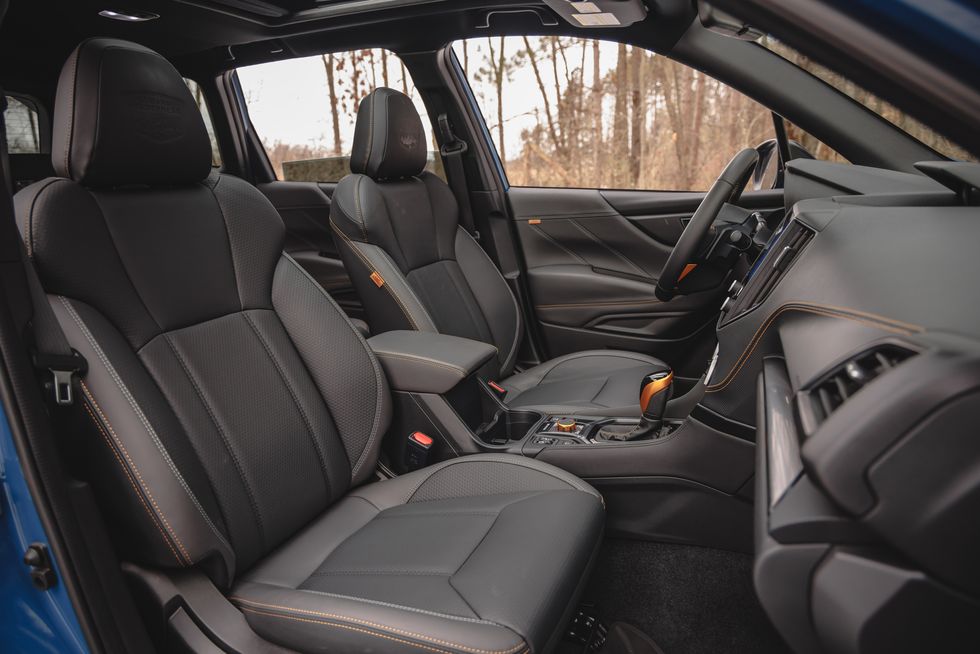
The Forester and CX-5 are available with a moonroof, but the Mazda offers more rear headroom. While this is great for taller passengers, the additional headroom under the glass top makes it easier to get in and out of the back seat.
The CX-5 features increased rear legroom, allowing the passengers to stretch their legs during long drives, thanks to the longer wheelbase. Both cars feature roomy trunks and the option to make that space even bigger by folding the back seats, but their seat styles are different.
The CX-5 features a three-piece 40/20/40 rear seat, while the Forester has a two-piece 60/40 rear seat. The three-piece seating design’s versatility provides the best use of passenger and cargo volume in any situation. Regarding interior design, the CX-5’s Signature trim level with Nappa leather and real Abachi wood trim delivers a notably better quality.
| Features | 2024 Subaru Forester | 2024 Mazda CX-5 |
| Seating Capacity | 5 | 5 |
| Cargo Space | 28.9 cu. ft. | 30.8 cu. ft. |
| Front Head Room | 41.2 in. | 39.7 in. |
| Front Leg Room | 43.3 in. | 41.0 in. |
| Front Shoulder Room | 58.1 in. | 57.1 in. |
| Rear Head Room | 39.6 in. | 39.0 in. |
| Rear Leg Room | 39.4 in. | 39.6 in. |
| Rear Shoulder Room | 57.2 in. | 54.8 in. |
Forester vs. CX-5 | Technological Advancements
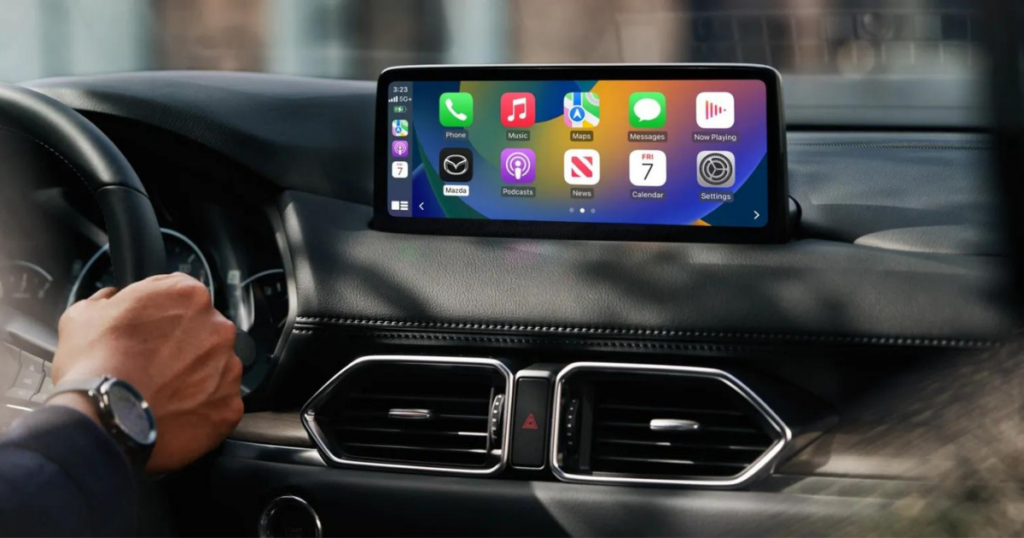
The Mazda CX-5 and the Subaru Forester both have an eight-inch color infotainment display, but this system comes standard on all CX-5 models while it is not standard on lower-priced Subaru versions. While the premium Subaru system has a Harman Kardon nine-speaker arrangement, the Mazda’s infotainment system can be paired with a 10-speaker Bose system.
The sound quality of both systems is excellent, but the Bose system with the additional speaker has a greater potential output due to its illustrious brand. Mazda’s infotainment system is superior to rivals since it comes standard with the HMI Commander system.
Situated between the central armrest and the shifter, this system has a sizable knob and several smaller buttons. When the driver’s elbow is on the middle armrest, their hand is extremely close to the HMI Commander, allowing them to access other programs like turn-by-turn navigation or modify the menu on the screen, radio station, or volume. This system adds an upscale feel and simplifies access to the entertainment system.
The CX-5 also stands out from its competitors due to its windshield-projected active driving display, also known as a heads-up display. This technology shows important information directly in front of the driver’s line of sight on the windscreen.
This enables the driver to maintain their focus on the road while keeping track of variables, including vehicle speed, the posted speed limit, navigational commands, and features of the i-Activsense driver aid technology suite.
Last but not least, the Mazda CX-5 has rain-sensing wipers that adjust their speed or slow down depending on the storm’s strength. This makes driving easy for drivers in bad weather because they don’t have to change speeds independently. On the other hand, while the Forester offers push-button ignition and keyless entry as optional extras, both technologies come standard on the latest CX-5 models.
Forester vs. CX-5 | Safety Features

Both the Subaru Forester and the Mazda CX-5 are equipped with multiple standard safety measures. This includes technologies like Blind Spot Monitoring, Rear Cross Path Detection, Radar Cruise Control, Lane Keep Assist, and automatic braking, which are all part of Mazda’s i-Activsense advanced driving assistance technology suite.
The availability of the Driver Attention Alert and the 360-degree View Monitor system with front and rear parking sensors sets the CX-5 apart from the Forester. In the CX-5, the Driver Attention Alert system activates after more than 20 minutes of highway driving. When in use, the system keeps track of the steering and throttle inputs of the driver as well as the car’s location on the road in relation to the lane markings.
When the system notices signs of fatigue, like strange steering or gas pedal movements, it tells the driver to pull over and take a break. The system makes the same suggestion when a driver has been driving for more than two hours straight. This makes the roads safer for everyone.
The CX-5’s driver may check the area surrounding the car with the help of the 360-degree View Monitor system to ensure it’s safe to move forward. Front and rear sensors guard against an impact when the driver parks too close to an object.
Forester vs. CX-5 | Design Wise
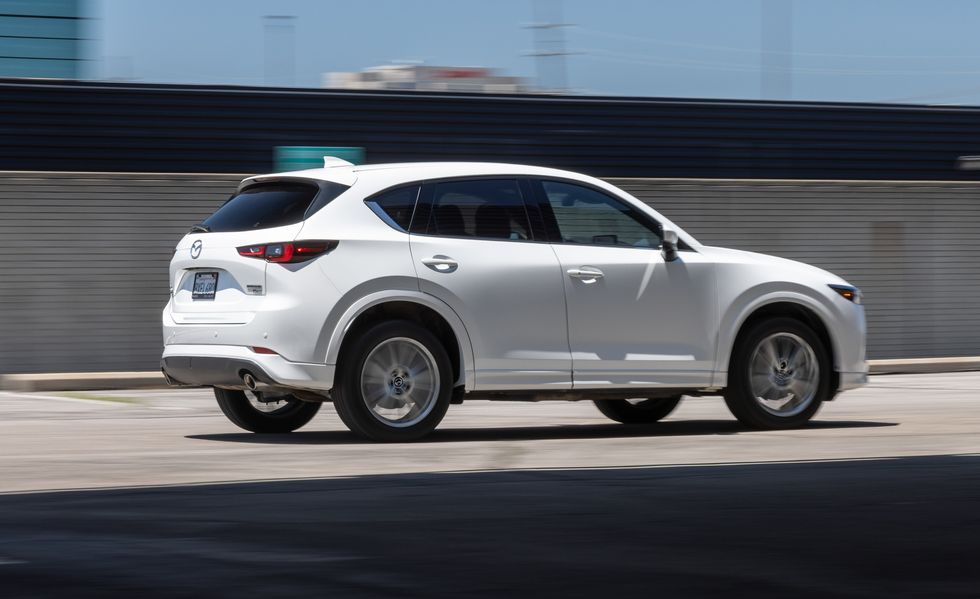
The CX-5 and Forester are designed in very different ways. The Subaru has an angular front end with contrasting colors and big vents on either side of a pair of grilles in the middle. The Forester has wide wheel opening arches around the sides, which give the car a bigger appearance. The CX-5 employs the Kodo design aesthetic, which emphasizes simplicity.
The Forester’s design is more angular and sporty. The front fascia of the CX-5 has lines that flow upward into the hood and outward along the sides, forming a seamless front-to-rear flow on every surface. The wheel arches are smaller, which adds a streamlined look to the elegant Mazda lines.
Forester vs. CX-5 | Trims and Pricing
2024 Subaru Forester
- Base: $28,190 MSRP
- Premium (Most Popular): $31,390 MSRP
- Sport: $32,960 MSRP
- Limited: $35,070 MSRP
- Wilderness: $36,015 MSRP
- Touring: $38,490 MSRP
2024 Mazda CX-5
- 2.5 S Select: $30,675 MSRP
- 2.5 S Preferred (Most Popular): $32,025 MSRP
- 2.5 S Carbon Edition: $33,325 MSRP
- 2.5 S Premium: $35,275 MSRP
- 2.5 S Premium Plus: $37,875 MSRP
- 2.5 Carbon Turbo: $38,375 MSRP
- 2.5 Turbo Premium: $39,175 MSRP
- 2.5 Turbo Signature: $41,975 MSRP
Subaru Forester vs. Mazda CX-5: Final Verdict
If you want a compact crossover with more power and a fun-to-drive factor, the Mazda CX-5 is the perfect pick. The base model outperforms a Subaru Forester, and the turbocharged version gives a significant increase in performance. In addition to having more power than the Subaru CVT, the Mazda automatic gearbox provides a more enjoyable driving experience.
Additionally, only the CX-5 offers front-wheel drive if you don’t need all-wheel drive. Despite the Forester’s superior engine, the CX-5 outperforms it in terms of passenger space, advanced safety features, and inside technology. The Mazda may cost a little more, but you get much more for your money.

